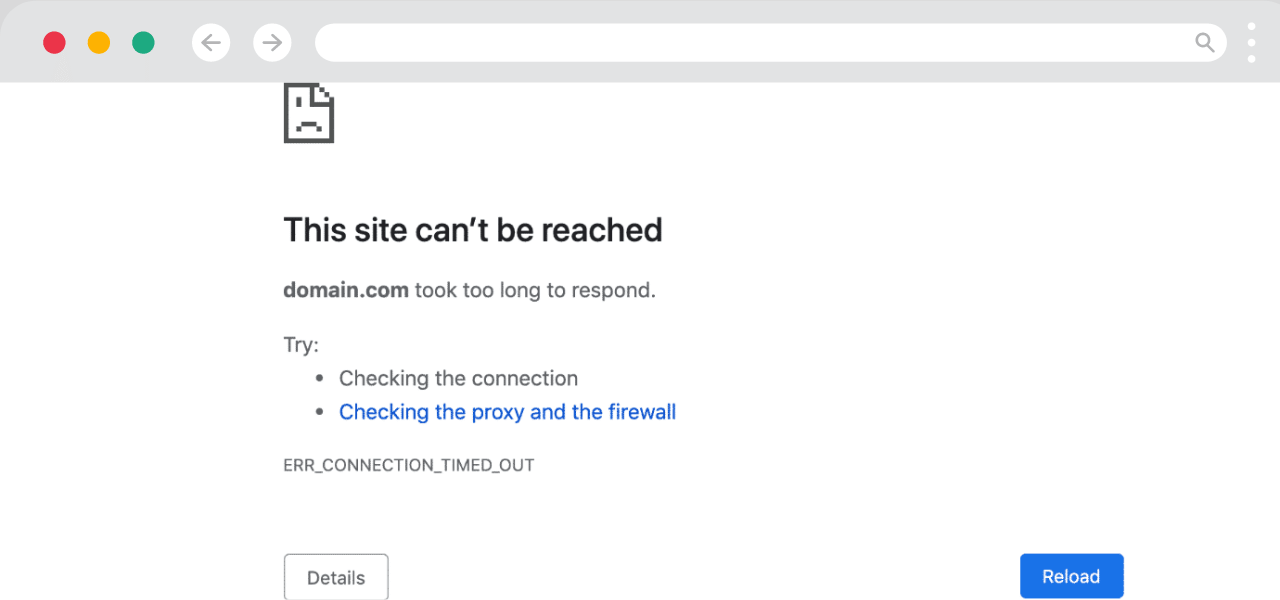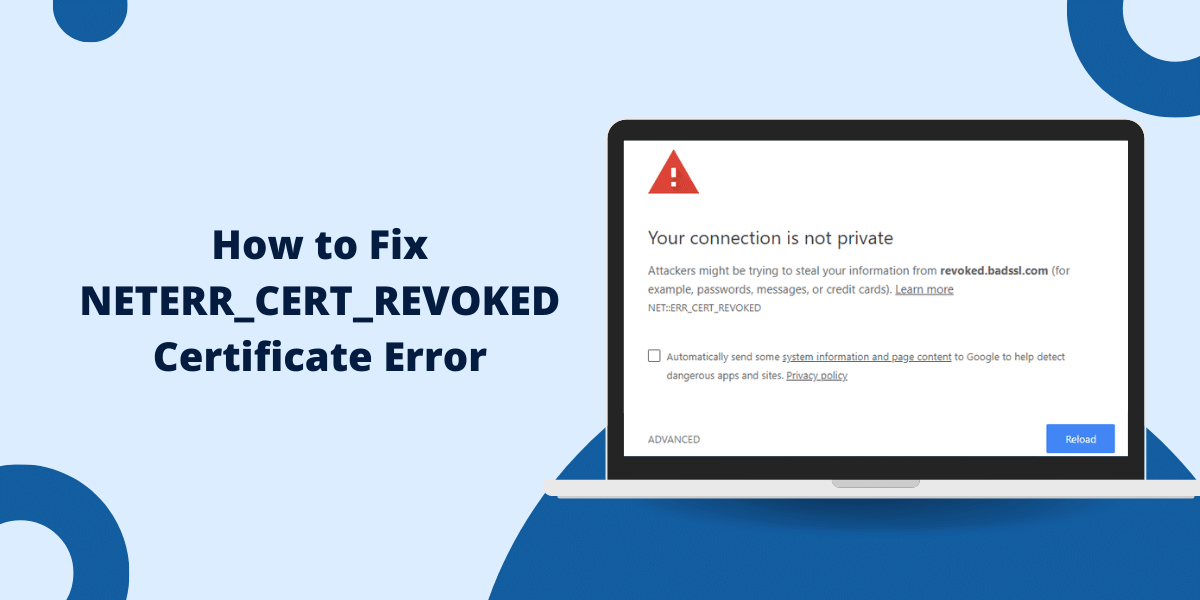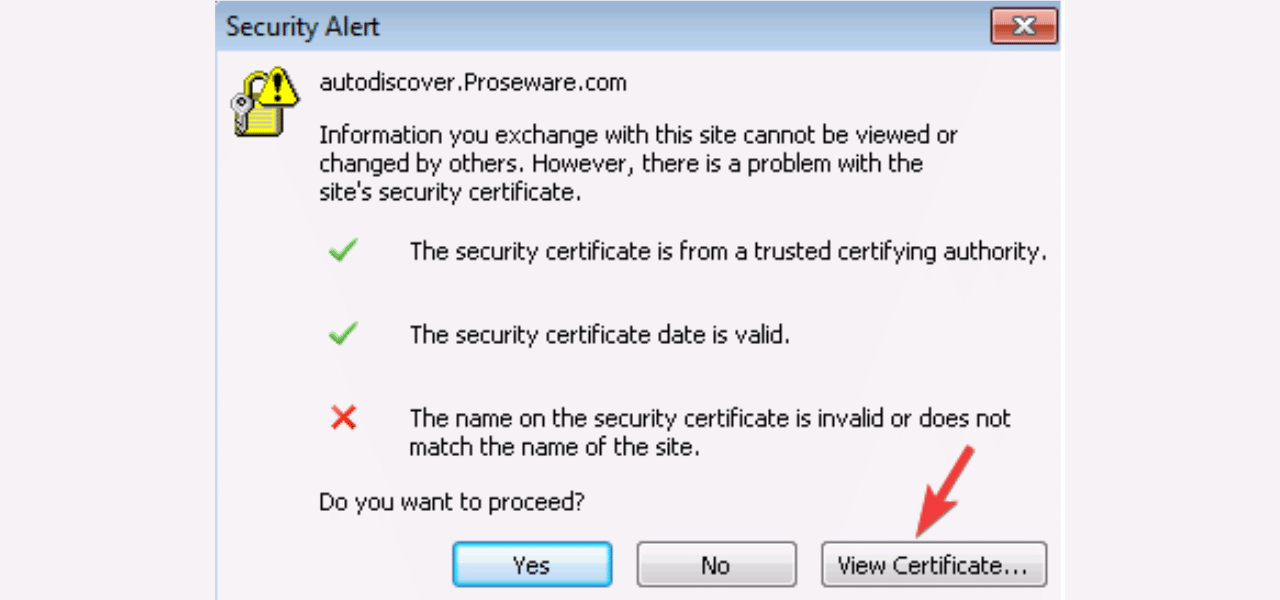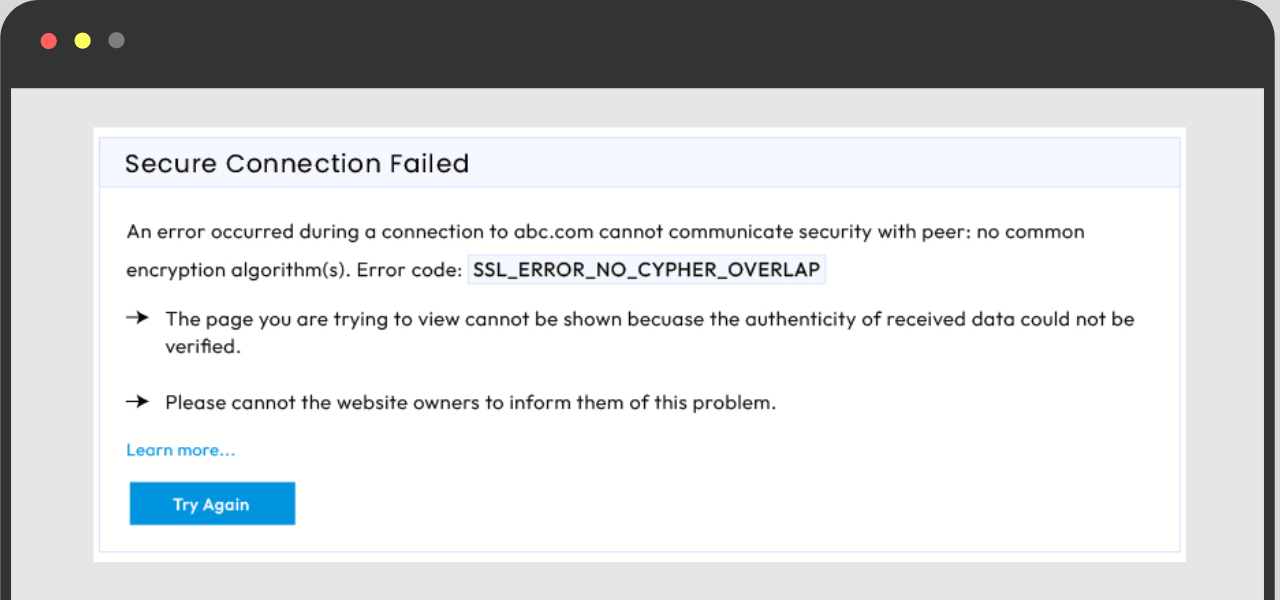What Does ERR_CONNECTION_TIMED_OUT Error Mean?
The ERR_CONNECTION_TIMED_OUT error is one of the most common errors people encounter when browsing the internet. This error indicates that the request timed out because it took too long to connect to the remote server. There could be several reasons why you are getting this error, ranging from problems on your end to issues on the server side.
In this comprehensive guide, we will walk you through all the possible causes of the ERR_CONNECTION_TIMED_OUT error and provide step-by-step solutions to fix them. Whether it’s a DNS issue, problems with your network, incorrect date and time settings, problems with your browser, or server-side issues, we’ve got you covered. By the end of this guide, you’ll be able to troubleshoot and resolve the ERR_CONNECTION_TIMED_OUT error quickly when you encounter it.
Potential Causes of the ERR_CONNECTION_TIMED_OUT Error
Before we jump into the solutions, let’s first understand what could potentially cause this error:
DNS Issues
The Domain Name System (DNS) translates human-readable domain names to computer-readable IP addresses. If there is an issue with your DNS settings, your browser won’t be able to resolve the domain name to its IP address, resulting in the connection timing out.
Potential DNS issues include:
- Incorrect DNS server addresses configured on your router or device
- Problems with your ISP’s DNS servers
- DNS server failure/downtime
- Corrupted DNS cache
Problems with Your Network
Since this error occurs when trying to establish a remote connection, any problems with your local network can also cause it:
- Weak Wi-Fi signal strength
- Unstable internet connection
- Faulty network cables
- Incorrect network settings on your device
- Outdated network drivers
- NAT/port forwarding errors if you are behind a firewall
Incorrect Date and Time Settings
For security, websites use your device’s date and time settings to validate SSL certificates. If your date/time settings are incorrect, the connection will fail.
Software and Browser Issues
Problems with your software and browsers can also trigger this error:
- Corrupt browser cache
- Outdated browser version
- Browser extensions causing conflicts
- Antivirus/firewall blocking connections
- Depleted system resources
Server-side Issues
Finally, the issue can also arise due to reasons on the server side:
- High server load/traffic causing slow response
- Server downtime
- Web application errors on server
- Firewall misconfiguration on server blocking connections
Now that we know all the potential reasons this error can occur, let’s move on to the step-by-step solutions.
Step 1 – Reset Router and Retry
The first thing to try is simply resetting your router and retrying the connection. Power cycle your router and modem – unplug them from power, leave them disconnected for 60 seconds, then plug them back in.
Once the router and modem are back up, try loading the webpage again. Resetting clears any corrupt DNS cache or network errors that may have occurred, fixing simple issues.
Step 2 – Flush DNS Cache
If resetting the router did not work, the next step is to flush your DNS cache. The DNS cache stores DNS records on your local device, and corruption or outdated entries can cause ERR_CONNECTION_TIMED_OUT errors. Flushing forces your device to fetch the latest DNS records.
Flush DNS cache on Windows
- Open Command Prompt as administrator
- Type ipconfig /flushdns and hit Enter
Flush DNS cache on Mac
- Open Terminal
- Type sudo killall -HUP mDNSResponder and hit Enter
Flush DNS cache on Mac
- Open Terminal
- Type sudo killall -HUP mDNSResponder and hit Enter
Flush DNS cache on Linux
sudo systemd-resolve --flush-caches
After flushing DNS, try accessing the website again. If the connection goes through, DNS cache was the issue.
Step 3 – Renew IP Address
If flushing DNS did not resolve the problem, renew your device’s IP address next. This renews the lease from the DHCP server and can fix network errors causing the timeout issue.
Windows
On Windows, open Command Prompt and run ipconfig /renew
Mac
On Mac, open Terminal and enter sudo dhclient -r && sudo dhclient
Linux
On Linux, use sudo dhclient -r && sudo dhclient
Once you have a new IP, try loading the website again.
Step 4 – Reset Network Settings
If the issue still occurs, reset your network adapters to factory settings. This will reset any incorrect network configs causing problems.
Reset network settings on Windows
- Go to Start > Settings > Network & Internet > Status
- On the right, click Network reset
- Select Reset now
Reset network settings on Mac
- Go to Apple Menu > System Preferences > Network
- Select each adapter and click the gear icon
- Choose Make Service Inactive, then Make Service Active
Reset network settings on Linux
- Open Terminal
- Type sudo systemctl restart network-manager
Once the network settings are reset, test the connection again.
Step 5 – Update Network Driver
Outdated or buggy network drivers can also cause timeout issues. Updating to the latest driver from your device manufacturer is recommended.
Update Network Driver on Windows
On Windows, open Device Manager, expand Network adapters, right-click your adapter and select Update driver.
Update Network Driver on Mac
On Mac, get the latest drivers from the support site of your hardware manufacturer.
Update Network Driver on Linux
On Linux, use your package manager to update network drivers, e.g.:
sudo apt update && sudo apt upgrade
Step 6 – Check Date and Time Settings
As mentioned before, incorrect time settings can lead to SSL verification errors. Ensure date and time are accurate on your device.
Windows
Go to Date and Time settings and set them correctly either manually or sync online.
Mac
Go to System Preferences > Date & Time and check settings.
Linux
Use the timedatectl command to check and change date/time.
Step 7 – Clear Browser Cache
A corrupted browser cache can also cause page loading problems. Clearing it forces the browser to redownload a fresh copy of the site.
Chrome
Go to Settings > Privacy > Clear Browsing Data. Select cached images/files and clear.
Firefox
Go to Options > Privacy & Security > Cookies and Site Data. Select Cached Web Content and clear.
Safari
Go to Preferences > Privacy. Under Website Data, select Manage Website Data > Remove All.
Step 8 – Try Disabling Browser Extensions
Some poorly coded extensions can interfere with page loading and cause timeout errors. Try disabling all extensions and testing if the issue persists.
Chrome
Go to Settings > Extensions and toggle them off.
Firefox
Go to Add-ons > Extensions and toggle them off.
Safari
Go to Preferences > Extensions and uncheck each extension.
If the site loads properly with extensions disabled, turn them on one by one to identify the problematic extension.
Step 9 – Update Browser to Latest Version
Outdated browsers may have bugs that cause connectivity issues. Updating to the latest version can resolve such problems.
On Windows and Mac, you can update Chrome/Firefox directly from the app. On Linux use your package manager, e.g. sudo apt upgrade firefox
Step 10 – Temporarily Disable Antivirus and Firewall
Security software like antivirus and firewalls can sometimes block connections causing this error. Temporarily disabling them is worth trying.
Note: Don’t keep them disabled permanently though for safety.
Windows
- Open Windows Security > Virus & Threat Protection > Manage Settings
- Under Real-time Protection, toggle Off
- Under Firewall & Network Protection, toggle Off
Mac
- Go to System Preferences > Security & Privacy and uncheck Firewall.
Linux
- Firewall: sudo ufw disable
- Antivirus: Varies depending on which one you use.
Step 11 – Change DNS Servers
Try using alternate DNS servers like Google (8.8.8.8) or Cloudflare (1.1.1.1). This will bypass your ISP’s DNS which could be having issues.
Windows
- Go to Network & Internet Settings > Change Adapter Options
- Right-click your network adapter > Properties
- Select Internet Protocol Version 4 (TCP/IPv4)
- Click Use the following DNS and enter 8.8.8.8 and/or 1.1.1.1
Mac
- Go to System Preferences > Network > Select your connection
- Click Advanced > DNS
- Enter 8.8.8.8 and/or 1.1.1.1
Linux
Open /etc/resolv.conf
Enter:
nameserver 8.8.8.8
nameserver 1.1.1.1
Save the file and restart networking.
With alternate DNS servers configured, try accessing the website again. If this works, your ISP’s DNS servers are likely having issues.
Step 12 – Clear Hosts File
The hosts file overrides DNS to map domain names to IPs. If incorrect entries are added, it can cause ERR_CONNECTION_TIMED_OUT.
Windows
- Open Notepad as administrator
- Go to File > Open and open C:\Windows\System32\drivers\etc\hosts
- Remove any incorrect entries mapping domains to IPs
- Save hosts file and restart browser
Mac/Linux
- Open the /etc/hosts file with sudo privileges
- Remove any incorrect entries mapping domains to IPs
- Save the file and test again
Step 13 – Test Website on Different Networks/Devices
To isolate if the issue is on your end or the server side, test the website on other networks and devices:
- Try your smartphone on mobile data – if it loads there, the problem lies in your local network.
- Connect your laptop to another Wi-Fi network – if it loads there, router settings may be misconfigured.
- Ask friends to test the site – if it doesn’t load for them too, server is likely down.
Step 14 – Clear Server-side Cache
If the website works for others, clearing server-side cache can resolve timeout issues:
- On WordPress sites, install a caching plugin like WP Super Cache and clear cache.
- For other platforms like Magento, Drupal etc., log into admin panel and clear server-side cache from there.
- Contact your hosting provider to clear server cache if you do not have access.
Step 15 – Wait for Some Time and Retry
If it’s a large site, there may be temporary high load or maintenance work going on leading to the timeout. Waiting for a while and retrying after some time may help resolve transient errors.
Step 16 – Contact Website Support
If all above steps fail, the website may be facing downtime or server-side technical issues. Contact their technical support (if available) and ask them to look into the server logs. They may be able to identify and resolve the actual issue.
Conclusion
ERR_CONNECTION_TIMED_OUT errors can occur due to various reasons ranging from client-side network problems to server-side issues. Following the systematic troubleshooting steps above will help you quickly isolate the culprit and resolve timeout errors when trying to access a website.
First focus on fixes like flushing DNS, resetting network, disabling extensions etc. on your local device. If the issue persists despite trying all client-side remedies, it likely indicates a problem on the server side that the website owner needs to investigate and fix.
Frequently Asked Questions
Why does the ERR_CONNECTION_TIMED_OUT error occur?
This error occurs when a connection takes too long to establish and exceeds the connection timeout duration set by the browser or server.
Is this error caused by my device or the website I’m trying to access?
It can be caused by issues on your device side or server-side problems on the website. Follow the troubleshooting steps to identify where the exact problem lies.
The error went away after resetting my router. Does that mean the issue was on my end?
Yes, if resetting the router (or other device-side fixes like flushing DNS) resolved the issue, then the problem was likely with your local network or device. The server was likely functioning fine.
How can I prevent timeout errors caused by the website’s server issues?
Unfortunately, you cannot fix server-side problems. You’ll have to contact the website support team in such cases so they can investigate and resolve the underlying issue.



